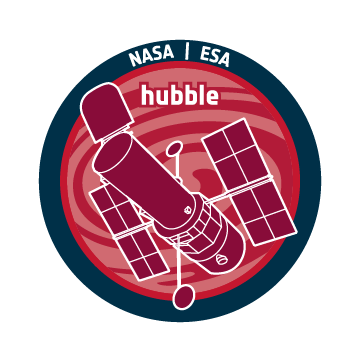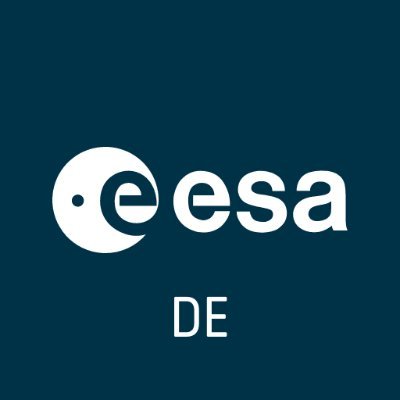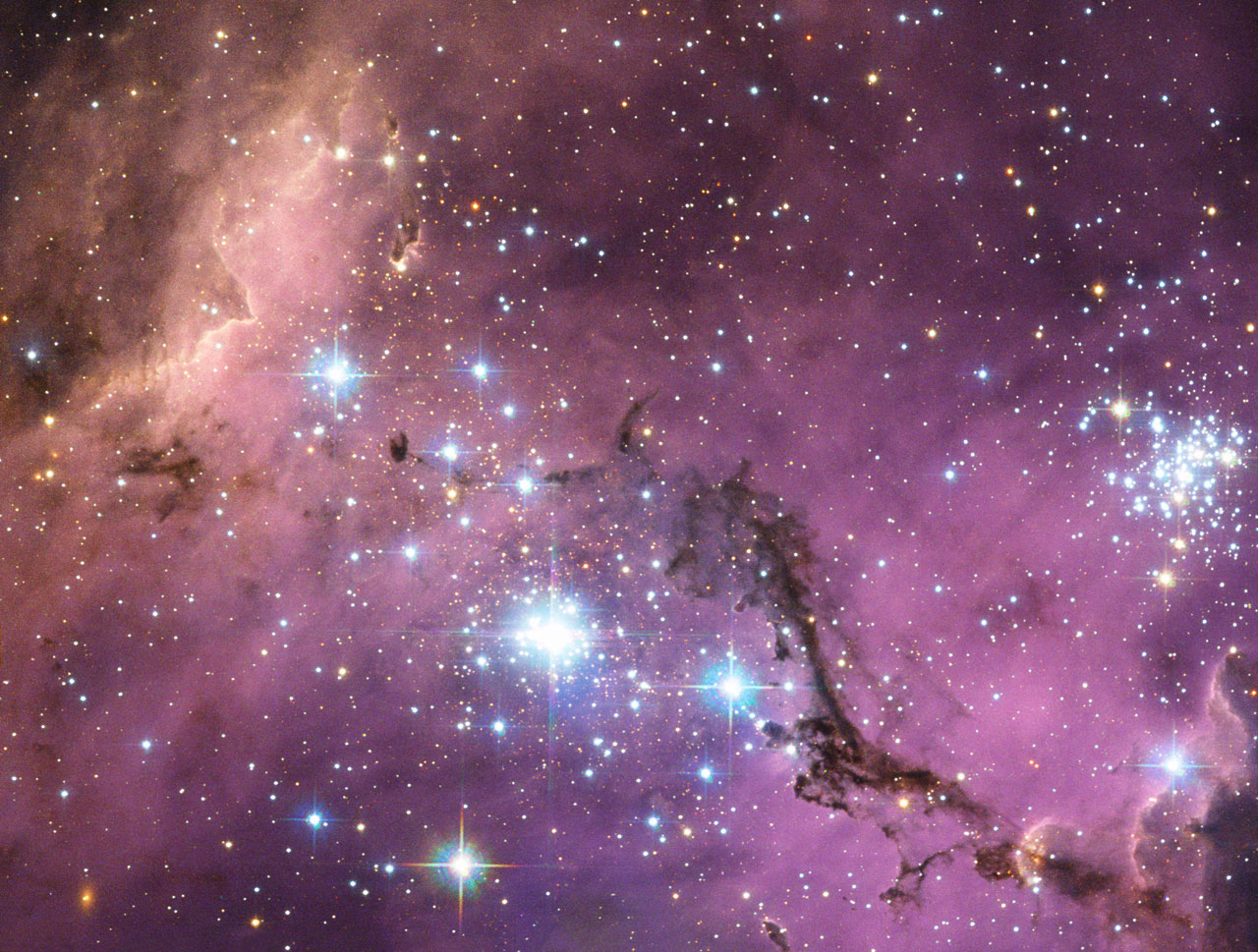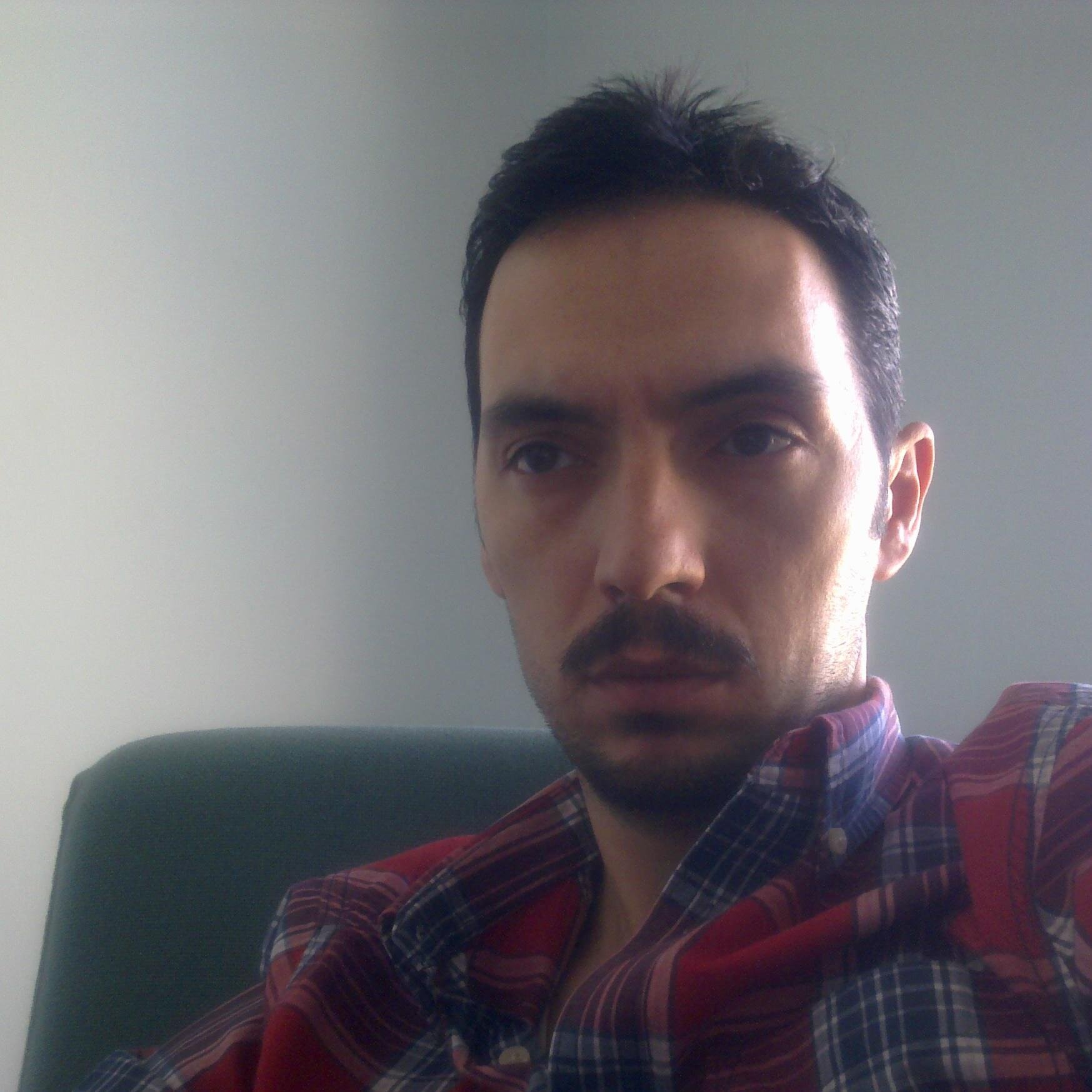#hubbletopimage نتائج البحث
A cosmic celebrity takes centre stage in our #HubbleTopImage 🐴⭐ This image of the Horsehead Nebula, which was captured to celebrate Hubble’s 23rd year in orbit, shows the region in infrared light. 1/3

Our #HubbleTopImage features a star among galaxies! 🤩 Messier 77 is one of the most famous galaxies, with more papers written about it than many other galaxies put together! However, it has twice been the victim of mistaken identity… 1/3

This #HubbleTopImage was once the deepest-ever view of the Universe! It was assembled from ten years of Hubble observations taken of a patch of sky within the original Hubble Ultra Deep Field. 1/3

Our #HubbleTopImage features a panoramic view of a star-forming region ⭐ 30 Doradus resides 170,000 light-years away in the Large Magellanic Cloud. No known star-forming region in our galaxy is as large or as prolific! Read more: ow.ly/oXxn50X8jnE

Our #HubbleTopImage features a spiral galaxy with a secret 🤫 Located just over 20 million light-years away, Messier 106 is one of the nearest spiral galaxies to our own. Despite its typical appearance, it hides a secret at its centre… 1/3

Our #HubbleTopImage digs up hidden treasure 💎 in the Large Magellanic Cloud! LHA 120-N 11, seen here, is a particularly bright star-forming region, consisting of several pockets of gas and star formation. 1/3
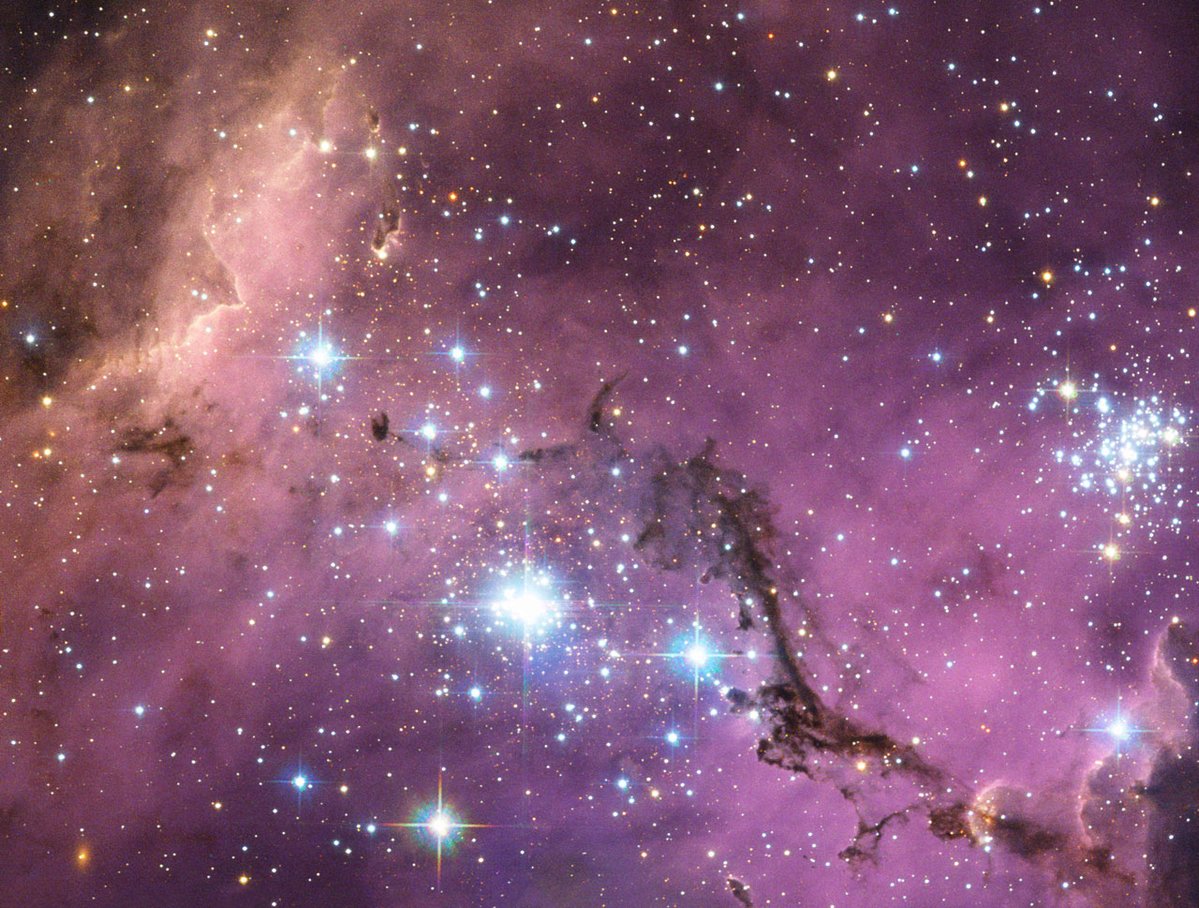
Our #HubbleTopImage revisits the Ring Nebula! From Earth’s perspective, the nebula appears like a simple elliptical shape. Observations combining ground-based data and Hubble data, however, revealed that it is more like a doughnut 🍩 1/3

Our #HubbleTopImage features strobe flashes from a young star 🌟 Every 25.34 days, the protostar LRLL 54361 unleashes a burst of light – possibly due to the interactions between two newly formed stars that are gravitationally bound. 1/3

Our #HubbleTopImage captures the planetary nebula PN Hb 12! 🦋 Its butterfly-like structure formed as a Sun-like star approached the end of its life and puffed its outer layers into the surrounding space. 1/3

Our #HubbleTopImage features a spectacular light show! 🎆 RS Puppis is a type of variable star known as a Cepheid variable. They pulsate relatively slowly – this one varies in brightness by almost a factor of five every 40 or so days.
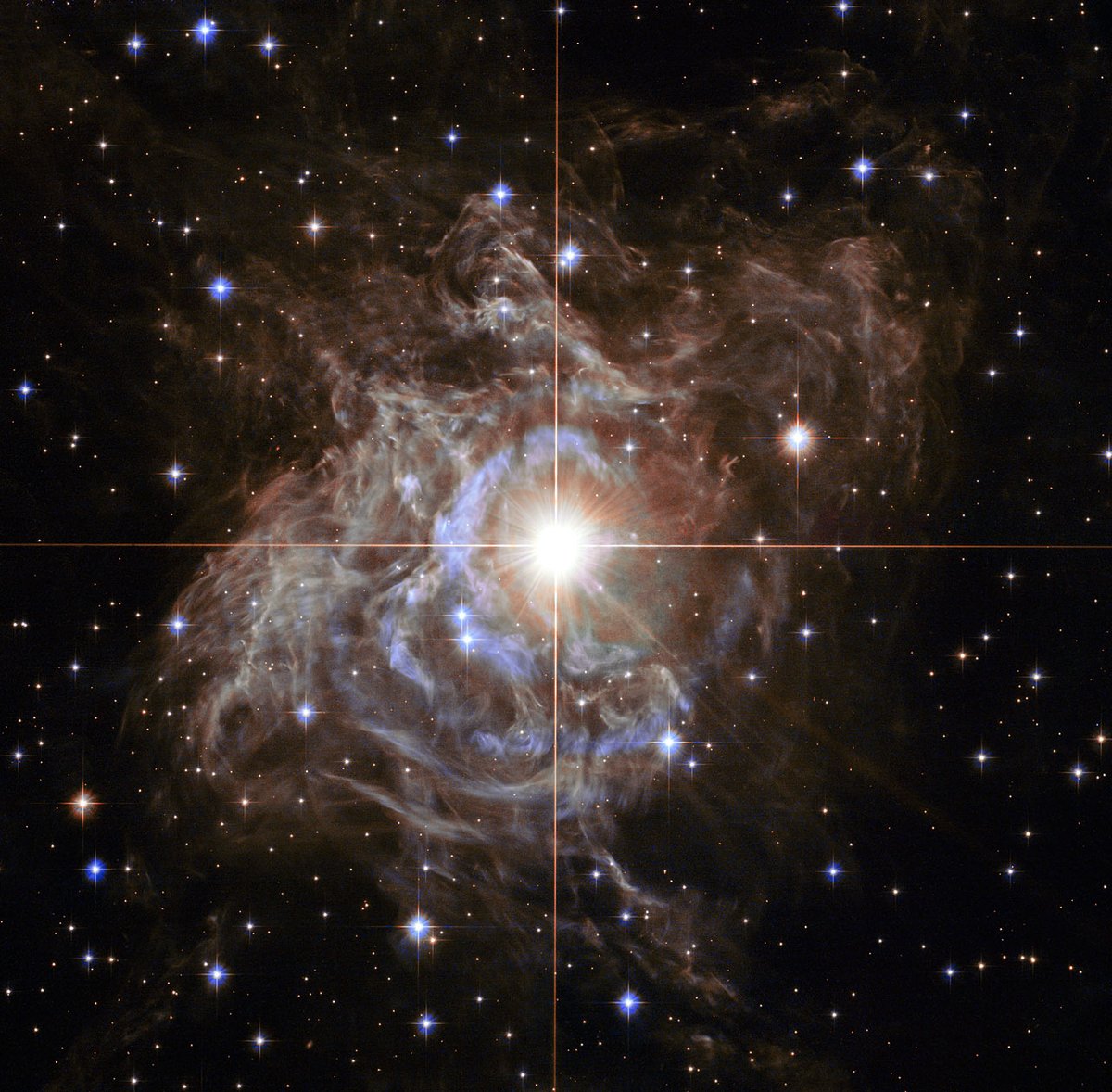
Our #HubbleTopImage features a distant gravitational lens! 🔍 The circle of light in this image is formed by the light of a distant starbursting dwarf galaxy being projected and magnified by the gravity of a nearer galaxy. 1/3
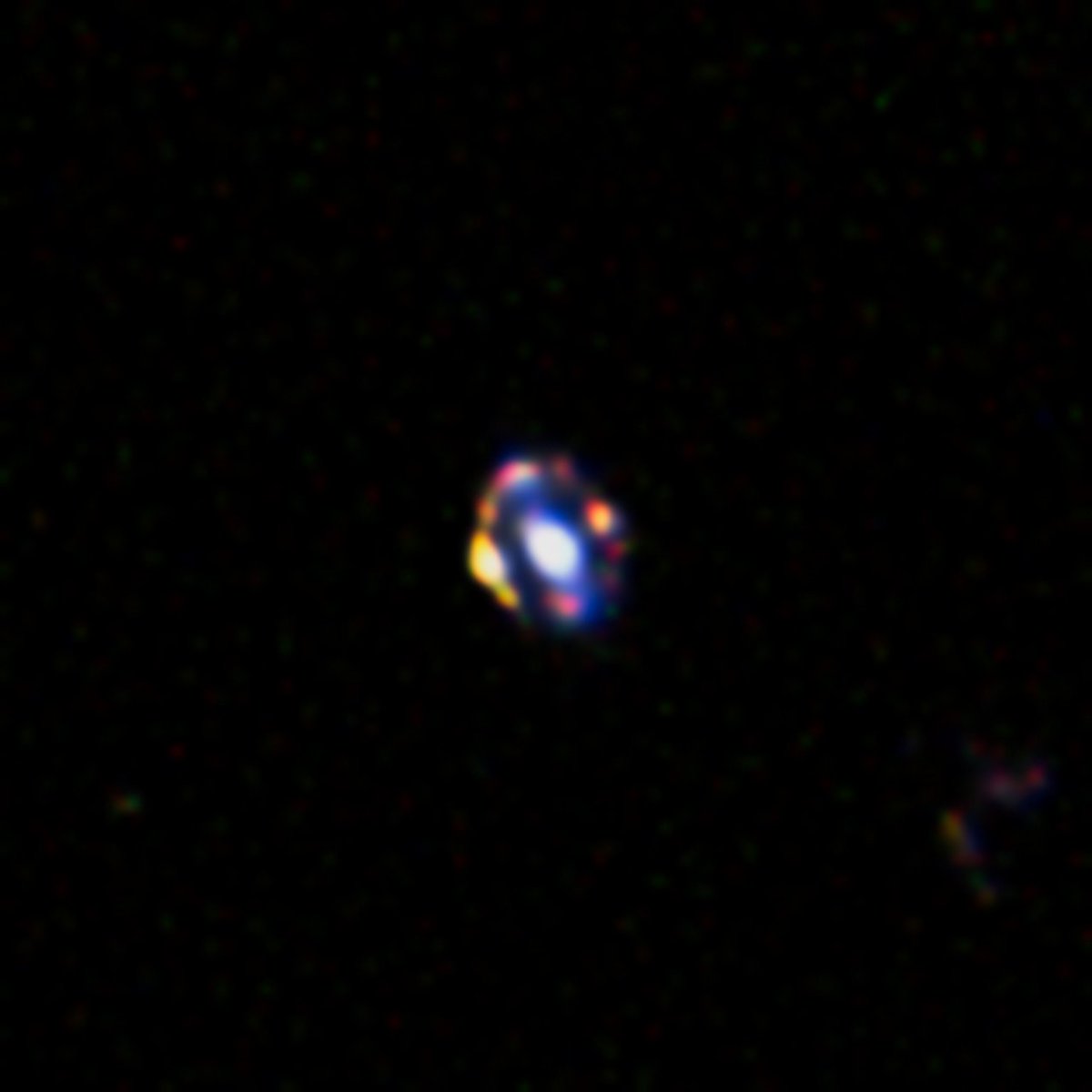
Our #HubbleTopImage catches two galaxies in close encounter! This pair is known as Arp 142. When two galaxies stray too close, they begin to interact – in some cases they merge 🤝 in others, they are ripped apart. 1/2
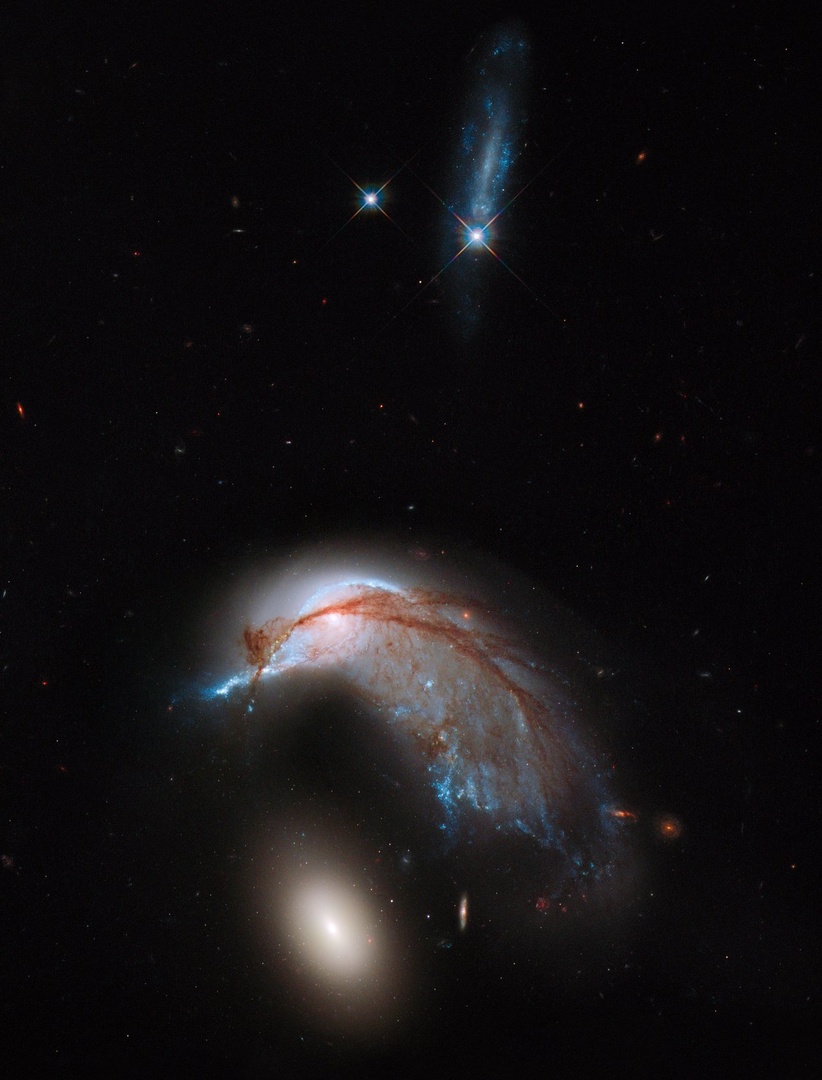
Soft shells and strange star clusters appear in our #HubbleTopImage this week! The petal-like shells 🪷 of galaxy PGC 6240 were captured in intricate detail by Hubble, set against a sky full of distant background galaxies. 1/3

Our #HubbleTopImage features the massive galaxy cluster Abell 1689! Abell 1689 acts like a cosmic lens 🔍 magnifying the light from objects lying behind it and making it possible for astronomers to explore incredibly distant regions of space. 1/3

Our #HubbleTopImage flashes back to an asteroid and its curious comet-like tails! ☄️ P/2013 P5 was first imaged by Hubble on 10 September 2013. When imaged again 13 days later, it seemed as though the entire structure had swung around. 1/3

Our #HubbleTopImage showcases a multiwavelength observation of Jupiter, offering a distinctive panchromatic perspective that has provided insights into the altitude and distribution of the planet's haze and particles.⬇️

Our #HubbleTopImage features the home of the farthest fast radio burst (FRB)! A FRB is a blast of energy that can, for a few milliseconds, outshine an entire galaxy. Hundreds have been detected – but their sources remain uncertain. 1/3
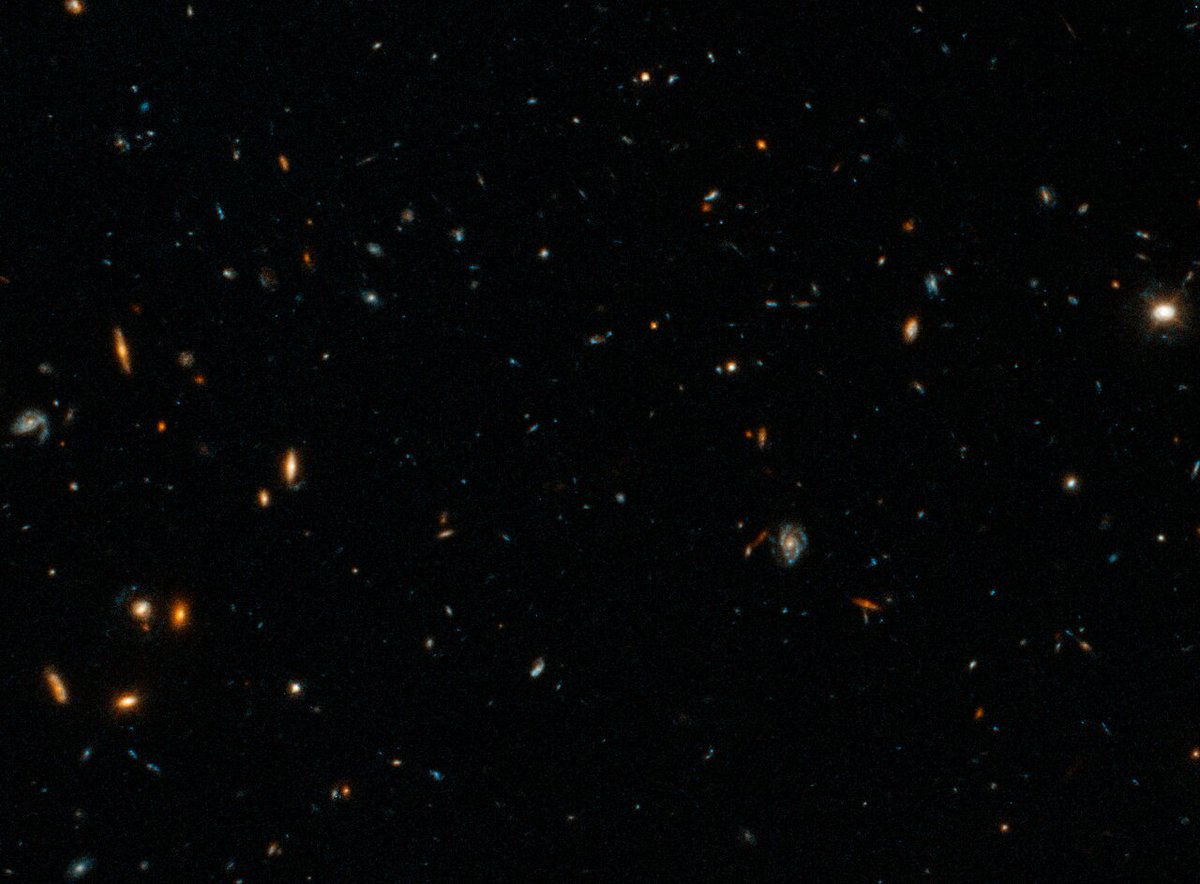
Our #HubbleTopImage takes you back to when astronomers found evidence of unexpected black holes! 🕳️ More black holes were found in the early Universe than previously reported – and many of them more massive than was thought possible. 1/3

Our #HubbleTopImage drifts through the vast Lagoon Nebula. Even though it is 4000 light-years away from Earth, this stellar nursery is three times larger in the sky than the full Moon 🌕 The Lagoon Nebula is alive with fierce winds from hot stars, swirling chimneys of gas, ⬇️

Our #HubbleTopImage features an asteroid photobomb! 🌠 It may look like someone took a white marker to this image of UGC 12158. In reality, it is a combination of exposures of a foreground asteroid moving through Hubble’s field of view. 1/3

Our #HubbleTopImage features a panoramic view of a star-forming region ⭐ 30 Doradus resides 170,000 light-years away in the Large Magellanic Cloud. No known star-forming region in our galaxy is as large or as prolific! Read more: ow.ly/oXxn50X8jnE

Our #HubbleTopImage is a classic portrait of a barred spiral galaxy 🌌 Hubble’s image of NGC 1073 is, in many ways, the archetypal portrait of a barred spiral. However, there are a few quirks here… 1/3
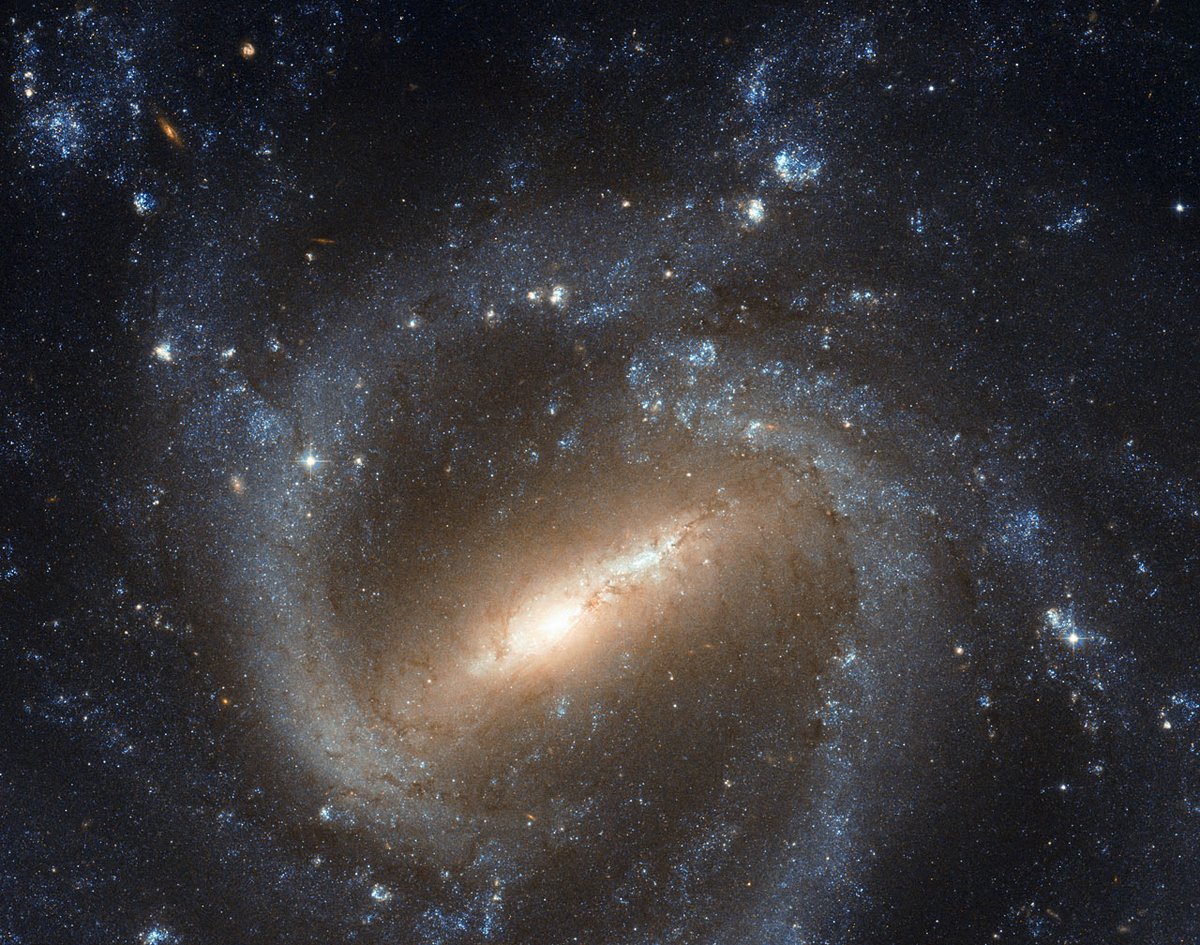
Das #HubbleTopImage findet einen versteckten Schatz in der Großen Magellanschen Wolke! LHA 120-N 11, hier zu sehen, ist ein besonders heller Sternentstehungsbereich, der aus mehreren Gasblasen und Sternentstehungsgebieten besteht. Mehr dazu: esahubble.org/news/heic1301/ 📷: @NASA,…
Our #HubbleTopImage digs up hidden treasure 💎 in the Large Magellanic Cloud! LHA 120-N 11, seen here, is a particularly bright star-forming region, consisting of several pockets of gas and star formation. 1/3

Our #HubbleTopImage digs up hidden treasure 💎 in the Large Magellanic Cloud! LHA 120-N 11, seen here, is a particularly bright star-forming region, consisting of several pockets of gas and star formation. 1/3

🔭 Amid clouds of gas and cosmic dust, the Horsehead Nebula endures, its pillar standing firm in the void. A stellar witness to the strength and fragility of the universe. 💫 #HubbleTopImage #StarLife #Discovery
🔭 Entre nubes de gas y polvo cósmico, la Cabeza de Caballo resiste el paso del tiempo, mostrando un pilar firme en medio del vacío. Un testigo estelar que nos habla de la fuerza y fragilidad del universo. 💫 #HubbleTopImage #VidaDeEstrella #Descubrimiento
This #HubbleTopImage was once the deepest-ever view of the Universe! It was assembled from ten years of Hubble observations taken of a patch of sky within the original Hubble Ultra Deep Field. 1/3

Our #HubbleTopImage revisits the Ring Nebula! From Earth’s perspective, the nebula appears like a simple elliptical shape. Observations combining ground-based data and Hubble data, however, revealed that it is more like a doughnut 🍩 1/3

Our #HubbleTopImage features strobe flashes from a young star 🌟 Every 25.34 days, the protostar LRLL 54361 unleashes a burst of light – possibly due to the interactions between two newly formed stars that are gravitationally bound. 1/3

Our #HubbleTopImage features a distant gravitational lens! 🔍 The circle of light in this image is formed by the light of a distant starbursting dwarf galaxy being projected and magnified by the gravity of a nearer galaxy. 1/3

Una estrella cósmica toma el protagonismo en nuestra #HubbleTopImage 🐴⭐ La Nebulosa Cabeza de Caballo, capturada en luz infrarroja, celebra los 23 años de Hubble en órbita. 🐴
A cosmic star takes center stage in our #HubbleTopImage 🐴⭐ The Horsehead Nebula, captured in infrared light, celebrates Hubble’s 23rd year in orbit. 🐴
A cosmic star takes center stage in our #HubbleTopImage 🐴⭐ The Horsehead Nebula, captured in infrared light, celebrates Hubble’s 23rd year in orbit. 🐴💫
Hubble capture l'éclat spectaculaire de la supernova SN 2018gv dans NGC 2525, à 70M d'années-lumière ! Cette explosion de type Ia illumine la galaxie et aide à mesurer les distances cosmiques. 🌟 #Espace #Astronomie #HubbleTopImage ift.tt/UMSANuP

A cosmic celebrity takes centre stage in our #HubbleTopImage 🐴⭐ This image of the Horsehead Nebula, which was captured to celebrate Hubble’s 23rd year in orbit, shows the region in infrared light. 1/3

Our #HubbleTopImage flashes back to an asteroid and its curious comet-like tails! ☄️ P/2013 P5 was first imaged by Hubble on 10 September 2013. When imaged again 13 days later, it seemed as though the entire structure had swung around. 1/3

Nossa #HubbleTopImage captura a nebulosa planetária PN Hb 12! Sua estrutura semelhante a uma borboleta se formou quando uma estrela semelhante ao Sol se aproximava do fim de sua vida e expandiu suas camadas externas para o espaço circundante.
Our #HubbleTopImage captures the planetary nebula PN Hb 12! 🦋 Its butterfly-like structure formed as a Sun-like star approached the end of its life and puffed its outer layers into the surrounding space. 1/3

Our #HubbleTopImage captures the planetary nebula PN Hb 12! 🦋 Its butterfly-like structure formed as a Sun-like star approached the end of its life and puffed its outer layers into the surrounding space. 1/3

Our #HubbleTopImage features the massive galaxy cluster Abell 1689! Abell 1689 acts like a cosmic lens 🔍 magnifying the light from objects lying behind it and making it possible for astronomers to explore incredibly distant regions of space. 1/3

Uzaya dair en inanılmaz videolar 🧵 1. Bir astronotun uzay yürüyüşü sırasında Dünya'ya bakışı
A cosmic celebrity takes centre stage in our #HubbleTopImage 🐴⭐ This image of the Horsehead Nebula, which was captured to celebrate Hubble’s 23rd year in orbit, shows the region in infrared light. 1/3

This #HubbleTopImage was once the deepest-ever view of the Universe! It was assembled from ten years of Hubble observations taken of a patch of sky within the original Hubble Ultra Deep Field. 1/3

Our #HubbleTopImage digs up hidden treasure 💎 in the Large Magellanic Cloud! LHA 120-N 11, seen here, is a particularly bright star-forming region, consisting of several pockets of gas and star formation. 1/3

Our #HubbleTopImage features a spiral galaxy with a secret 🤫 Located just over 20 million light-years away, Messier 106 is one of the nearest spiral galaxies to our own. Despite its typical appearance, it hides a secret at its centre… 1/3

Our #HubbleTopImage revisits the Ring Nebula! From Earth’s perspective, the nebula appears like a simple elliptical shape. Observations combining ground-based data and Hubble data, however, revealed that it is more like a doughnut 🍩 1/3

Our #HubbleTopImage features strobe flashes from a young star 🌟 Every 25.34 days, the protostar LRLL 54361 unleashes a burst of light – possibly due to the interactions between two newly formed stars that are gravitationally bound. 1/3

Our #HubbleTopImage features a panoramic view of a star-forming region ⭐ 30 Doradus resides 170,000 light-years away in the Large Magellanic Cloud. No known star-forming region in our galaxy is as large or as prolific! Read more: ow.ly/oXxn50X8jnE

Our #HubbleTopImage features a star among galaxies! 🤩 Messier 77 is one of the most famous galaxies, with more papers written about it than many other galaxies put together! However, it has twice been the victim of mistaken identity… 1/3

Our #HubbleTopImage features a distant gravitational lens! 🔍 The circle of light in this image is formed by the light of a distant starbursting dwarf galaxy being projected and magnified by the gravity of a nearer galaxy. 1/3

Our #HubbleTopImage captures the planetary nebula PN Hb 12! 🦋 Its butterfly-like structure formed as a Sun-like star approached the end of its life and puffed its outer layers into the surrounding space. 1/3

Our #HubbleTopImage catches two galaxies in close encounter! This pair is known as Arp 142. When two galaxies stray too close, they begin to interact – in some cases they merge 🤝 in others, they are ripped apart. 1/2

Our #HubbleTopImage is a classic portrait of a barred spiral galaxy 🌌 Hubble’s image of NGC 1073 is, in many ways, the archetypal portrait of a barred spiral. However, there are a few quirks here… 1/3

Our #HubbleTopImage features a spectacular light show! 🎆 RS Puppis is a type of variable star known as a Cepheid variable. They pulsate relatively slowly – this one varies in brightness by almost a factor of five every 40 or so days.

Our #HubbleTopImage flashes back to an asteroid and its curious comet-like tails! ☄️ P/2013 P5 was first imaged by Hubble on 10 September 2013. When imaged again 13 days later, it seemed as though the entire structure had swung around. 1/3

Our #HubbleTopImage features the massive galaxy cluster Abell 1689! Abell 1689 acts like a cosmic lens 🔍 magnifying the light from objects lying behind it and making it possible for astronomers to explore incredibly distant regions of space. 1/3

Soft shells and strange star clusters appear in our #HubbleTopImage this week! The petal-like shells 🪷 of galaxy PGC 6240 were captured in intricate detail by Hubble, set against a sky full of distant background galaxies. 1/3


Our #HubbleTopImage features the home of the farthest fast radio burst (FRB)! A FRB is a blast of energy that can, for a few milliseconds, outshine an entire galaxy. Hundreds have been detected – but their sources remain uncertain. 1/3

Our #HubbleTopImage takes you back to when astronomers found evidence of unexpected black holes! 🕳️ More black holes were found in the early Universe than previously reported – and many of them more massive than was thought possible. 1/3

Something went wrong.
Something went wrong.
United States Trends
- 1. Branch 36.9K posts
- 2. Chiefs 111K posts
- 3. Red Cross 52.6K posts
- 4. Exceeded 5,829 posts
- 5. Binance DEX 5,102 posts
- 6. Mahomes 34.7K posts
- 7. #njkopw 7,087 posts
- 8. Rod Wave 1,656 posts
- 9. #LaGranjaVIP 82.9K posts
- 10. Air Force One 57.4K posts
- 11. Eitan Mor 16.9K posts
- 12. #TNABoundForGlory 59.6K posts
- 13. #LoveCabin 1,380 posts
- 14. Ziv Berman 19.8K posts
- 15. Alon Ohel 17.5K posts
- 16. Tel Aviv 59.1K posts
- 17. Matan Angrest 15.7K posts
- 18. Omri Miran 16.1K posts
- 19. Bryce Miller 4,605 posts
- 20. Tom Homan 81.2K posts

